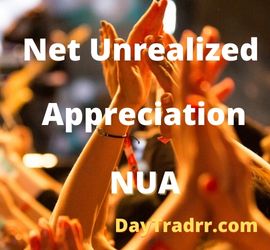What Is a Normal Good?
 A normal good is one that has an increase in demand owing to an increase in consumer income. In other words, a rise in wages leads to an increase in demand for normal goods. On the other hand, a decrease in pay or a layoff leads to a decrease in demand. A consumer’s income has a direct link with the demand for a normal good. Consumer behavior patterns determine the demand and increased wages cause changes in consumer behavior. As income rises, customers may be able to purchase products that were previously beyond reach.
A normal good is one that has an increase in demand owing to an increase in consumer income. In other words, a rise in wages leads to an increase in demand for normal goods. On the other hand, a decrease in pay or a layoff leads to a decrease in demand. A consumer’s income has a direct link with the demand for a normal good. Consumer behavior patterns determine the demand and increased wages cause changes in consumer behavior. As income rises, customers may be able to purchase products that were previously beyond reach.
In such a circumstance, demand for these items rises as a result of their consumer appeal. It might be explained by superior product quality, more usefulness, or a more distinguished socioeconomic status. For example, many luxury goods appeal to this elevated level of status. Economists use income elasticity of demand to assess how demand responds to changes in consumer income or purchasing power. It is computed by dividing the change in demand for a product by the change in income. Income elasticity of demand is frequently used to distinguish between a normal, inferior, and luxury item. The same measure helps to estimate sales during periods of rising or falling income.
Normal Good – A Closer Look
A normal good is also known as a required good or a necessary good in economic terms. It refers to the degree of demand for the product in proportion to wage increases or decreases. It is not a description of the quality of the good in question. The link between income and demand for a normal good is elastic. In other words, changes in demand and income are connected and move in the same direction. The amount the quantity fluctuates in response to a change in income is called the elasticity of demand. It is used to explain and measure variations in consumption patterns brought about by changes in purchasing power.
Income elasticity of demand
Elasticity is the amount of change that one market component undergoes in reaction to another. You can calculate the change in demand divided by the percentage change in income for normal goods. For example, after obtaining a 20% raise, a person may boost their purchases of clothing and electronics by 10%. The income elasticity of demand, in this case, is 0.5. This suggests that the clothing and electronics purchased are normal goods. The demand for these products, or higher quality items in these sectors, increases with increased wealth.
If a product’s price varies in proportion to its demand, it is neither elastic nor inelastic. In other words, an item has elastic demand if its demand fluctuates more than its price. Consider two retailers selling identical Nike trainers. One retailer charges $200 per pair while another charges $180 per pair. Few consumers would buy the more expensive Nike trainers if the demand was perfectly elastic. Instead, most would buy the shoes from the merchant who sells them at a lower price. In reality, some consumers may continue to pay more for Nike trainers because they prefer the other business’s owner. Or, because the shop is closer to their house and they don’t want to go across town.
Income elasticity of demand is used by economists to assess whether an item is a necessity or a luxury item. Companies also examine the income elasticity of demand for their products and services. This helps to estimate sales during economic expansions that result in rising incomes. Conversely, it helps predict slumping sales during economic downturns that result in dropping incomes.
Normal Good versus Inferior Good
With a normal good, demand increases as income rises. This is the opposite of inferior goods where their demand decreases as consumer wealth rises. For example, if an economy develops and salaries grow, customers would prefer a more expensive option over inferior items. However, the phrase “inferior” refers to affordability rather than quality. Public transportation has a less-than-zero income elasticity of demand coefficient. This means that its demand reduces as income grows, categorizing it as an inferior good. In general, most individuals, given the option, would prefer individual transportation. Inferior goods are items or services that people buy because they cannot afford higher-quality replacements for these goods.
Normal goods are any commodities whose demand rises as income rises. In general, Nike or Adidas sneakers would be considered normal. As you earn more money, you’re more likely to upgrade from low-quality shoes to higher-quality ones. A good is considered normal when you consume or want more of it when your income rises. For example, when money is limited, a consumer might buy generic corn flakes. This is because they were inexpensive but were adequate for breakfast. When our consumer received a $5,000 salary raise at work, he decided to buy Special-K the next time he went shopping. The brand name cereal is the normal good whereas generic corn flakes are the inferior good. If Mr consumer loses his job a month later, his income would fall. As a result, his demand for inferior goods would increase and he would revert back to generic corn flakes.
Normal Good versus Luxury Good
Wealthy individuals enjoy luxury items such as high-end vehicles, expensive clothing, and custom art. The demand for luxury products is directly related to one’s income. People typically buy this category of goods when they have a large amount of discretionary cash and high income. Consumers who normally buy normal or inferior goods may occasionally splurge on a luxury item as a treat. Or, as an indulgence or consequence of an unexpected financial windfall. However, demand for luxury goods will fall during severe economic times. Vacations, consumer durables, gourmet meals, and gym memberships are examples of luxury products.
People spend a larger proportion of their income on luxury products as their income grows. Conversely, they spend the same or less of their income on regular and inferior goods as their income grows. People with lower earnings typically spend a bigger proportion of their money on ordinary and substandard things than those with higher incomes. However, on an individual basis, the distinction is personal and relative. A specific item may be considered a normal good by one person but an inferior or luxury good by another. Further, the distinction between commodities is not uniform between nations and geographical locations. In one nation, a good may be deemed normal. However, in another, it may be considered inferior. Several factors can have an impact on the categorization.
Examples of a Normal Good
- Food and beverage – High-end restaurants are considered a normal good. This is because consumers will buy more costly coffee and dine out more frequently as their wealth rises. With increasing disposable wealth, customers may expect higher quality meals and specialty drinks depending on their own preferences. When income is low, people will save money by eating at inexpensive cafes, and chain restaurants. Or, cutting back and reverting to home-cooked meals and drinks.
- Consumer electronics – Electronics are classified as normal goods. Individuals spend more on electronic computers, tablets, fitness trackers, and gaming systems as their purchasing power rises. Many electronics retailers offer a variety of brands of certain electronic devices. Some of which may be considered inferior or luxury goods based on user choices and tastes. When purchasing phones and televisions, most purchasers identify major brands such as Apple and Samsung. As a result, they may perceive off-brand devices to be inferior goods.
- Clothing – Clothes can be classified as normal or inferior goods based on their style and quality. People prefer to spend more on apparel at luxury clothing retailers as their purchasing power improves. When there is an increase in money, consumers may also select designer apparel in high-end shops. When people’s incomes fall, they will still buy clothes. However, they may do so through retail outlets or online rather than luxury apparel stores.
Up Next: NUA – What Is Net Unrealized Appreciation?
 NUA or net unrealized appreciation is the rise in the value of an employee retirement plan when a lump-sum distribution is made into a taxable account. Instead of being taxed as regular income, the difference in value is taxed at long-term capital gains rates. For example, employees can roll over a portion of their 401(k) investment in company stock to a brokerage account. Then, they pay tax at more advantageous long-term capital gains tax rates rather than higher ordinary income tax rates. This is the key advantage when the shares are sold under the NUA – net unrealized appreciation rules.
NUA or net unrealized appreciation is the rise in the value of an employee retirement plan when a lump-sum distribution is made into a taxable account. Instead of being taxed as regular income, the difference in value is taxed at long-term capital gains rates. For example, employees can roll over a portion of their 401(k) investment in company stock to a brokerage account. Then, they pay tax at more advantageous long-term capital gains tax rates rather than higher ordinary income tax rates. This is the key advantage when the shares are sold under the NUA – net unrealized appreciation rules.
Under the NUA rules, former employees can elect to defer taxes on the NUA until the time they liquidate the stock. The NUA should be taxable as long-term capital gains. This is regardless of how soon they sell the stock after they receive it in kind. Also, NUA and any additional appreciation realized after the distribution in kind should not be subject to the 10% early withdrawal penalty. This is regardless of the client’s age. However, the additional appreciation should be taxable as short-term or long-term gains. Of course, this depends on how long the client held the stock after it was distributed in kind from the plan.




